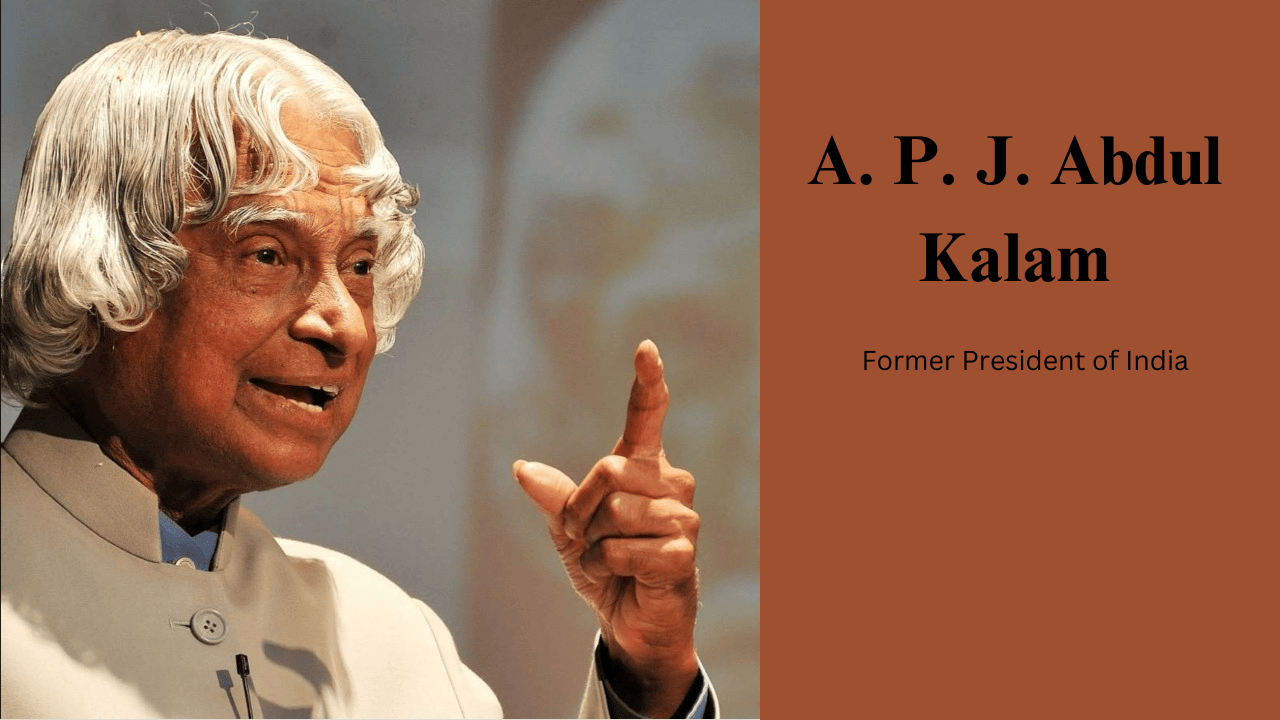Dr. APJ Abdul Kalam: The Missile Man of India
Introduction
Avul Pakir Jainulabdeen Abdul Kalam, popularly known as APJ Abdul Kalam, was an eminent Indian aerospace scientist, educator, and politician who served as the 11th President of India from 2002 to 2007. Renowned as the "Missile Man of India," Kalam played a pivotal role in advancing India's missile and space programs and is remembered for his vision of a developed India.
Early Life and Education
Born on October 15, 1931, in Rameswaram, Tamil Nadu, Abdul Kalam hailed from a modest family. His father, a boat owner, and his mother, a housewife, instilled in him the values of hard work and perseverance. Kalam faced financial challenges in his early education but excelled academically. He graduated from St. Joseph's College in Tiruchirappalli with a degree in Physics and later pursued aerospace engineering at the Madras Institute of Technology.
Career in Aerospace
Kalam joined the Indian National Committee for Space Research (INCOSPAR) in 1960, where he worked closely with Dr. Vikram Sarabhai, the father of the Indian space program. His contributions to the Indian Space Research Organisation (ISRO) and the Defence Research and Development Organisation (DRDO) were instrumental in launching India's first satellite, Aryabhata, in 1975.
Kalam's most notable achievements came during his leadership of India's missile development programs, including the Agni and Prithvi missiles. His innovative approach and leadership transformed India into a self-sufficient nation in missile technology.
Presidency
In 2002, Kalam was elected as the President of India, becoming the first scientist to hold the office. He was a popular leader, known for his humble nature and ability to connect with the youth. His presidency was marked by initiatives aimed at fostering scientific research and innovation. He emphasized the importance of education, particularly in science and technology, and encouraged young Indians to dream big.
Kalam’s vision for India included the concept of "Vision 2020," which aimed to transform India into a developed nation by the year 2020. He believed in empowering the youth and often interacted with students, inspiring them to pursue their dreams with dedication.

Post-Presidency and Legacy
After completing his term in 2007, Kalam continued to engage with students and educators, focusing on education and promoting scientific research. He authored several books, including "Wings of Fire," an autobiography that narrates his journey from humble beginnings to becoming a national leader. His books inspired countless readers, especially young people, to aspire for greatness.
Kalam received numerous awards and honors during his lifetime, including the Bharat Ratna, India's highest civilian award, for his contributions to science and technology. He passed away on July 27, 2015, while delivering a lecture at the Indian Institute of Management Shillong.
Conclusion
APJ Abdul Kalam remains an enduring symbol of excellence and inspiration in India. His vision for a developed India, dedication to science, and commitment to education have left an indelible mark on the nation. He is often referred to as the "People's President" for his approachable demeanor and unwavering belief in the potential of the youth. Kalam’s legacy continues to inspire future generations to pursue knowledge, serve the nation, and dream big.